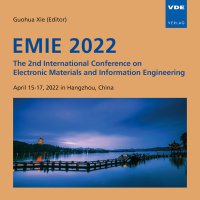The vital role of anode and cathode materials in lithium-ion battery
Konferenz: EMIE 2022 - The 2nd International Conference on Electronic Materials and Information Engineering
15.04.2022 - 17.04.2022 in Hangzhou, China
Tagungsband: EMIE 2022
Seiten: 9Sprache: EnglischTyp: PDF
Autoren:
Gui, Chengyu (Department of Material Science Engineering, University of California, Irvine, USA)
Wang, Yurun (Department of Electrical and Electronic Engineering, University of Manchester, UK)
Inhalt:
Nowadays, environmental issues such as air pollution and global warming have become more serious. Therefore, people devote themselves to finding green energy to mitigate and even solve environmental problems. Lithium-ion battery (LIB) is an emerging energy storage system to substitute traditional fossil fuels such as coal, gasoline, etc. Using LIBs could avoid exhaust gas emissions, which benefit our environment a lot. Above different types of batteries, LIB is most commonly used in daily life and manufacture. First of all, although the energy density of LIB is small comparing to other energy sources such as gasoline, its energy density is much larger than most batteries such as lead batteries. Second, LIB has a high voltage platform which is beneficial to compose the battery pack. Third, although people are not satisfied with the current cycle life of LIB, the cycle life of LIB still is longer than most other batteries. Additionally, LIB is environmentally friendly from production to use; there is no harmful heavy metal element referred not like some traditional batteries such as mercury battery. Therefore, LIB is a promising electricity storage system. This review article introduces some basic knowledge, including LIB mechanism, classification of the anode and cathode material about the LIB. The state-of-the-art anode materials along with cathode materials are systematically discussed, and the lookingforward prospects of LIBs are shown in the end.


